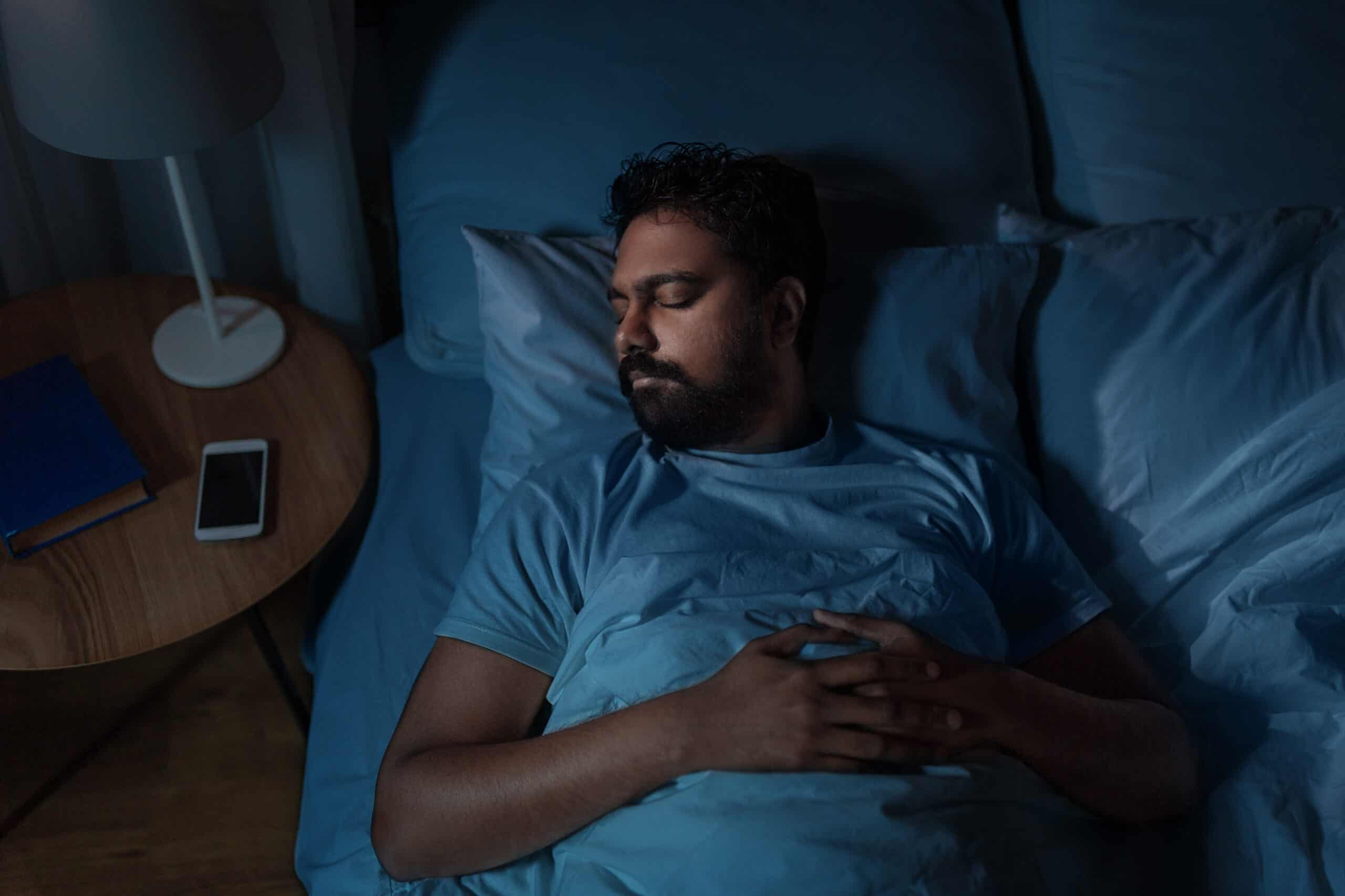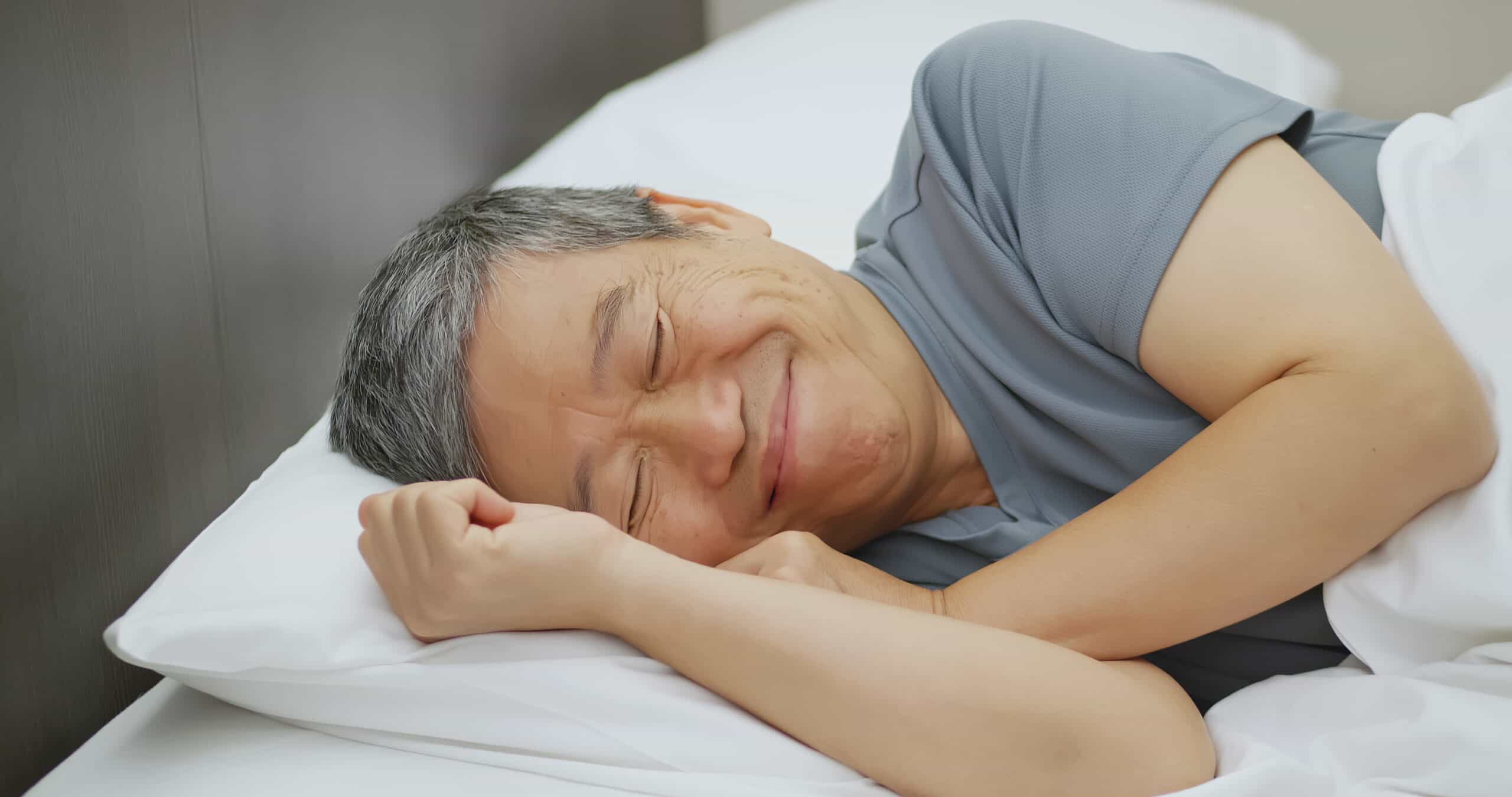
Osteoporosis & Sleeping Well

Osteoporosis & Sleeping Well
Sleeping well is vital for our overall health and well-being. The Public Health Agency of Canada recommends adults get 7 to 9 hours of sleep, however, getting quality sleep as we age can be harder due to medications and health issues. Quality sleep is just as important as regular exercise and a healthy diet.
Osteoporosis can affect the quality and quantity of our sleep. Sleeping positions that used to be comfortable may now cause us discomfort or not give us adequate support. We may find ourselves tossing and turning or worried if some sleep positions are causing us harm. Thankfully, there are ways to improve our sleep positions that provide support for our bodies and improve the quality of our sleep.

What sleeping positions are best for your body?
Spine alignment in a “neutral” position without putting any strain on your other joints is the key. A “neutral spine” is when the head is positioned so that the ear is over the shoulder and the shoulder is in line with the hip joint. Use this posture when you’re sitting, standing, or lying down too. Whether you are a side, back or stomach sleeper, your goal should be to stay in this neutral position as it lengthens your spine and protects its natural alignment.
The fetal position (curling up) may be your favourite way to sleep, but it can cause strain on the back of your neck and make the spine curve forward which also strains your vertebrae. If this is one of your favourite sleeping positions, gently and gradually practice elongating your spine into a “neutral” position. If you are a daytime napper, think about what position your body is in, especially your head and neck. Is your spine in a neutral position? The same applies to napping, whether you are sleeping in bed, on a chair, on a sofa or in the car. Change takes time; be patient with yourself and listen to your body.

How do I choose a mattress to support my osteoporosis?
If you live with osteoporosis, an ideal mattress would be one that provides you with good spinal support in a neutral spine alignment without causing pressure on your joints. The “best” mattress is debatable and each person should test a mattress before buying.
Medium-firm mattresses may help with lower back pain, and be easier to shift around in. A firm mattress may cause discomfort for some at the hips and shoulders. Innerspring (coil spring) and memory foam (all-foam) are the most common and affordable mattresses. Foam mattresses “cradle” the body more, adapt to body temperatures, and if too soft, may make it challenging to shift around in.
A restless sleeper may benefit from an innerspring mattress to allow movement without disturbing their partner. Consider the bed’s assembled height as it may be a risk if the bed is too high or too low. Your feet should be able to rest on the floor while sitting on the bed to avoid sliding off. Think about your room size and space on both sides of the bed to safely get in and out of the bed.
What pillow is best for osteoporosis?
The purpose of a pillow is to keep your head and neck aligned in a neutral position while you sleep. The first step in choosing a pillow is to determine your dominant sleep position – the position you usually fall asleep in.
Back sleeper: Choose a pillow that cradles the head and supports the natural curve of the neck. Place another one under the knees to flex the knees and relieve spine tension.
Side sleeper: Place a pillow lengthwise between your knees and ankles to level the top leg with the pelvis. This prevents hip twisting. Try a body pillow, a long pillow about 136 cm (54 inches), which can be placed in front between knees and cuddled, or behind to support the back.

Stomach sleeper: Choose a thin, “scrunchable” pillow since your face is very close to the mattress. Keep in mind that in this position, the head is turned to the side most of the night adding strain to your neck and spine.
Other things to consider when buying a pillow are:
- Test the firmness of pillows by using the squeeze test – the harder you have to squeeze to flatten it, the firmer it is;
- Consider hypoallergenic pillows and check the breathability and heat retention of the materials if you have allergies.
- Purchase a pillow with a good-quality cover, and if in doubt, consider buying a pillow protector that can be washed.
Overall, the best pillow for you fills the space between your shoulder and head so they are neutral.
“Comfort is very subjective, but when the head and neck are aligned in its best neutral position and is well-supported for sleep, you will awake more refreshed.”
– Sharron Steeves, retired physiotherapist
Where should you go to receive more advice from a professional?
You and your doctor can discuss your needs and options. Often a physiotherapist or occupational therapist can assist you by assessing your ideal neutral spine alignment for sleeping.
After The Fracture
- Learn more about What Is A Neutral Spine here.
- A gentle “good morning” stretch wakes up your body and mind before getting out of bed. Learn more on Bed Rest and Getting In and Out of Bed Safely here.
Credit: COPN, the Canadian Osteoporosis Patient Network is the patient arm of Osteoporosis Canada, a national network of people living with osteoporosis.





